Keep your leaves or lose them, that is the question

In this winter period, in our regions with a marked seasonality, many trees present bare and dark silhouettes, clearly standing out from the landscape. A few weeks earlier, in the fall, their leaves fell. More or less early depending on climatic conditions , this total loss of foliage does not concern all species.
Trees are divided into two main groups, with very different phenological behavior, phenology designating in plants, the study of the phases of seasonal development, leafing, flowering, fruiting, etc.
Either they keep their leaves alive (or at least a part of them) in winter, these are the evergreen or so-called evergreen species; either they lose them all in autumn, renewing all of their foliage in spring; they are then called deciduous or deciduous species.
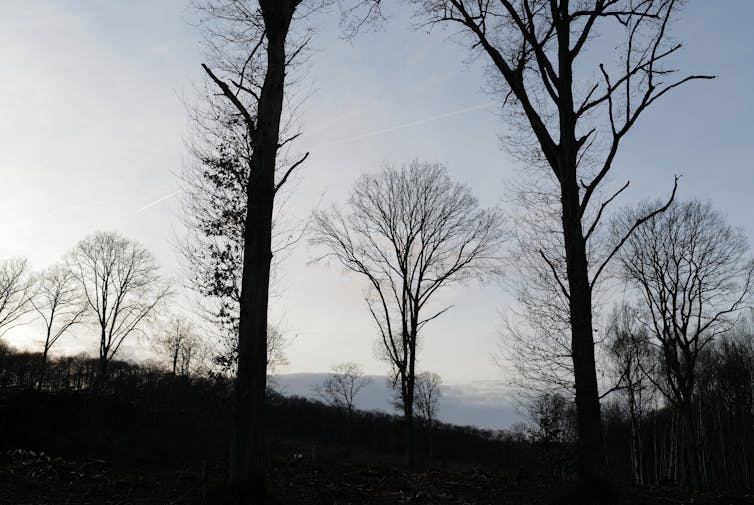
Broad and thin or reduced and needle-like leaves
Evergreen is the rule among conifers, that large group of coniferous trees with needle or scale leaves including firs, pines, spruces, etc., with a few notable exceptions, such as the bald cypress ( Taxodium distichum ) of the Louisiana bayous , widely introduced in Europe, or the larch ( Larix decidua ), present in the Alps.
In deciduous trees, which differ from conifers by their well-developed leaves – where we find oaks, beeches, hornbeams, chestnut trees, lime trees, etc. –, the two behaviors can exist, even within the same family or the same genus, such as that of the oaks ( Quercus sp.).
In all cases, one will observe rather soft, wide and fine leaves in the deciduous species and rather reduced, leathery, in the evergreen species.
Regarding the geographical distribution of these two phenological types, mountain and high latitude forests (such as the taiga, for example), favor evergreen species.
In the Mediterranean basin, the site of most of our research, the forests are also rather structured by evergreen species, even if deciduous forests are not rare, for example those of pubescent oak in the South-East of the France or those of zéen oak in the Moroccan Middle Atlas.
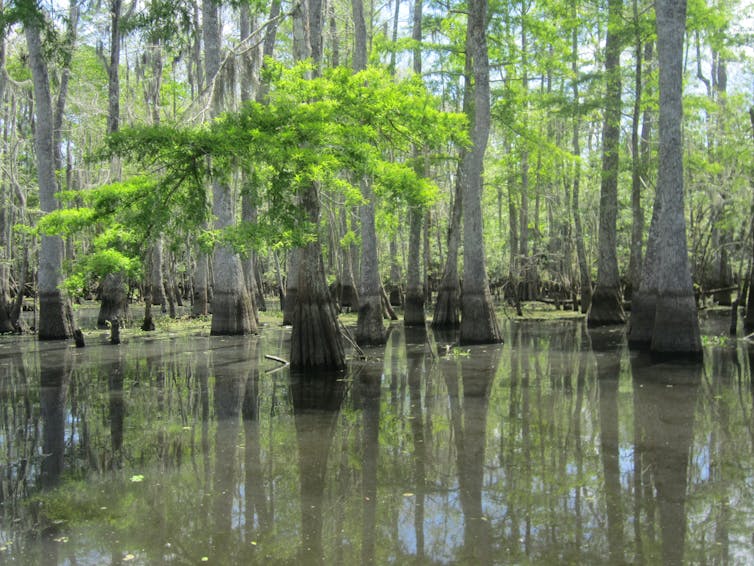
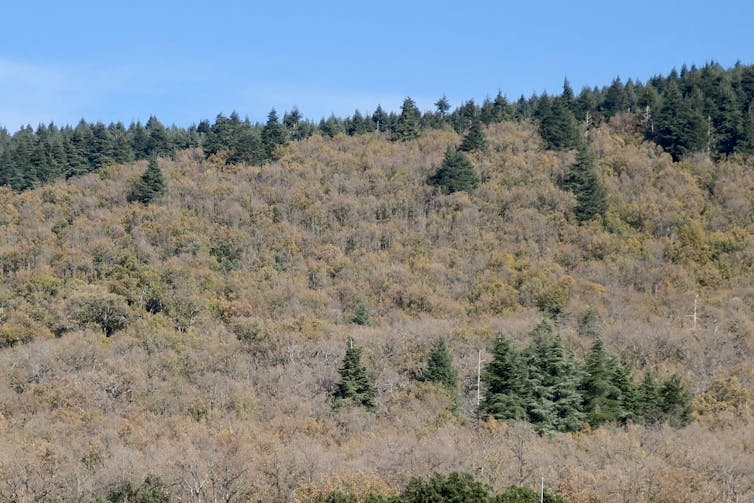
Foliage always renewed
It should be noted that evergreen species of course also lose their leaves from time to time; otherwise the leaves would be the same age as the tree!
But instead of losing all the leaves every year, they only lose half, or 1/3, or even less depending on the species; there are therefore always green leaves on the tree which is therefore always green ( evergreen in Latin), the foliage thus renewing itself over several years.
Both strategies have their advantages. Keeping leaves in winter will allow, in the Mediterranean region, to extend the period of photosynthetic activity to the relatively mild winter period.
In boreal forests, such as the taiga or those in the mountains, it will be a question of keeping its leaves for several years, saving resources, such as nitrogen or phosphorus, which are relatively limited in the soils of these environments.
This process is facilitated by the fact that the needles of species colonizing these environments, such as Scots pine or spruce, have exceptional resistance to frost, by concentrating in their cells a certain number of organic substances which act as veritable antifreezes .
We must indeed insist on the fact that renewing its foliage every year has a cost. And what we qualify for plants as "energy allocation" will not go into other vital functions, such as reproduction (making more flowers, more fruits) or the production of secondary metabolites. to fight off predators.
On the other hand, leaves that are three or four years old, or even much older – as in the California awny pine where the needles can persist for 20 or 30 years – will be less efficient in terms of photosynthesis than brand new spring leaves developed by deciduous species at the end of a winter rest period, which their wide and thin leaves would not have resisted anyway.
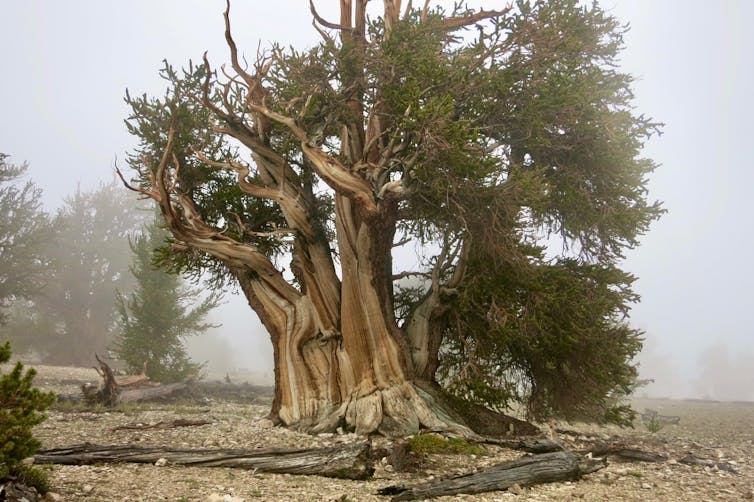
Pubescent oak and holm oak
But the two types can also follow each other in space and time.
Take the example of the French Mediterranean region, and in particular the limestone Provence, where two species of oaks compete for space.
To the pubescent, deciduous oak, even if it has the particularity (qualified as "marcescence") of keeping part of its dead leaves on the tree in winter, the least sunny slopes, the weakest slopes and the deeper and with holm oak, evergreen, the best exposed slopes and superficial, hot and stony soils.
On another spatial scale, the wettest and cooler areas of the French Mediterranean region, such as Haute-Provence, are dominated by downy oak, while in the warmer coastal or low-altitude areas, holm oak is more frequent.
The effects of human action
But what was it before human communities profoundly modified the environment, over more than 6,000 years ago, through deforestation and cultivation?
For some , the pubescent oak, whose wide distribution outside the Mediterranean is well known – from Quercy to the Paris Basin, even the Langres plateau – is rather a sub-Mediterranean species that only flourishes in a Mediterranean climate when the soils are deep and have retained enough water in the spring to overcome the summer drought.
For others , it is perfectly adapted to the Mediterranean climate, and if the holm oak has supplanted it, it is because the opening of the environment by man and the cultivation of the land most favorable to the pubescent oak has favored the latter, better adapted to hot, dry and sunny situations.
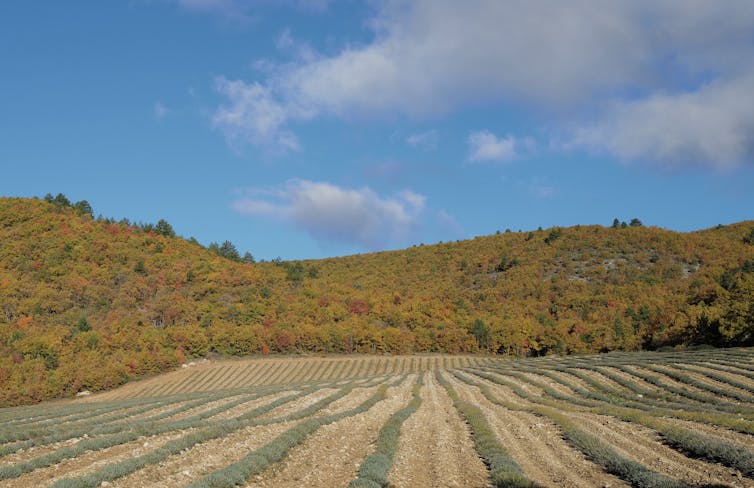
The debate remains open even if we know today that the pubescent oak is just as capable as the holm oak of resisting very severe droughts.
But it is also possible that the two phenological types coexist in the same forest.
This is the case of the beech-fir forest of the Iraty forest, in the Pyrenees. Two species of the same importance in the tree stratum and, moreover, a deciduous and an evergreen, is it natural or is it linked to the action of man? The answer is partly in the way this forest has been managed over the past centuries with different uses for each of these two species: making boat masts for fir trees, coal mining and wood supply for forges for beech.
In any case, combining two different functional behaviors in the same ecosystem means playing on the complementarity of the species.
How global warming changes the game
Climate change will profoundly modify the current forest landscape of France.
In 2100, the holm oak, now considered a valuable Mediterranean species (although already present on the Atlantic coast) will be much more present in the West and North. Conversely, the pedunculate, deciduous oak, present everywhere outside the Mediterranean region, will decline from 2050, concentrating in the North and East and even seeming condemned from the Atlantic coast which suited it so well !
The beech, a perfect example of a deciduous with broad and fine leaves, without any adaptation allowing to limit their transpiration, should see its distribution area strongly modified.
In the France of 2100, the evergreen species, more resistant to the new restrictive climatic conditions, will then perhaps take precedence over the deciduous ones, thus considerably modifying the current landscapes.
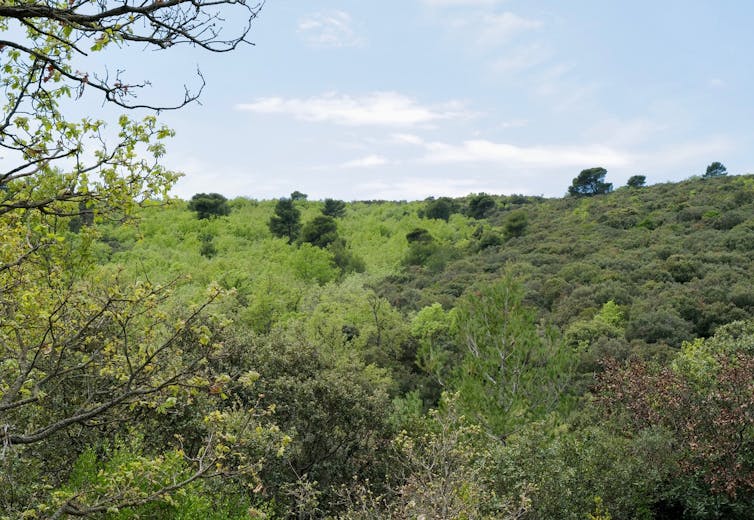
With the increase in forest areas linked to pastoral abandonment , this new situation will lead to a more extensive forest cover, but also more constant throughout the year, likely to lead to an increase in temperature, due to a lower ability to reflect solar energy – this is called albedo – dark canopies compared to open ground or leafless winter forests.
But all this remains a hypothesis... A new study from Princeton University has indeed just shown that forests could have a cooling effect, taking into account a new element: the clouds which tend to form more frequently on the forest areas. ![]()
Thierry Gauquelin , Emeritus Professor, Mediterranean Institute of Marine and Continental Biodiversity and Ecology (IMBE), Aix-Marseille University (AMU)
This article is republished from The Conversation under a Creative Commons license. Read the original article .
